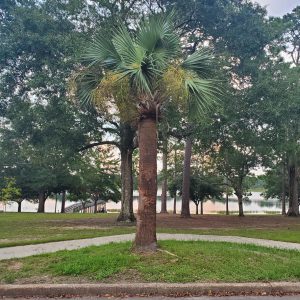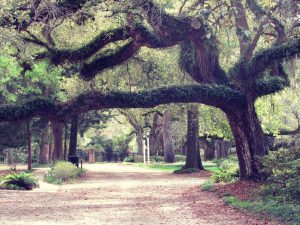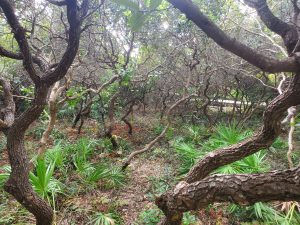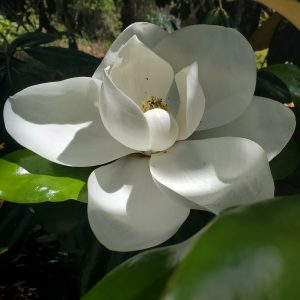Florida’s state observance of Arbor Day falls on January 21st in 2022. On this day, people are encouraged to plant trees and recognize their importance. Trees provide us with shade and shelter, filter air and water, and increase biodiversity as well as acting as a source of materials for building and industry. Half of Florida’s land area is forested and North Florida has a large timber industry. Given the importance of trees to our wellbeing and the erratic and sometimes extreme weather in our region, the question occasionally arises, “What trees are best to plant here?”.
The answer to that question depends heavily on the needs of the person asking it. A landowner looking for long-term profit from forestry may choose to plant longleaf pines, despite the risks that hurricanes pose. A homeowner desiring a shade tree, however, might want a different answer.
There are plenty of varieties of trees that grow well in the panhandle of Florida, and the further one lives from coastal areas, the greater the options. Particularly along the shores, however, choices are limited by soil types, exposure to high winds, and even salt spray. So which are the toughest and hardiest trees for our area?
Florida’s state tree is the sabal palmetto. Also called the cabbage palm, this palm is particularly cold tolerant, withstanding temperatures down to 15º F. Once established, they are drought tolerant and fairly resistant to pests and diseases, as well as being particularly sturdy in high winds. Though they may be thought of as “common”, this is a testament to their survivability in our climate and they should not be dismissed as an option for landscapes.
Both the Southern live oak and especially the sand live oak are exceptionally survivable trees. Sand live oak is found closer to the coast, where it tends to grow in beautiful multi-trunked forms slightly inland, or in lower thickets along the dunes. It tends not to reach the same heights as Southern live oak, but does well in the harshest of
conditions, lasting through almost anything nature can throw at it. Even if defoliated by heavy storm winds, these trees survive. Hurricanes claim only the occasional live oak that catch enough wind to uproot and topple the entire tree, which is not a common occurrence.
Southern magnolia comes in many sizes, from huge old specimens to more compact cultivars such as ‘Little Gem’, which can be trained to grow as hedges. Tolerating a wide range of soil moisture, these trees are rarely harmed by disease, though scale insects often take up residence on their leaves (which rarely seems to bother the trees, even if infestations are heavy). With gorgeous and fragrant blooms in the springtime, Southern magnolia stands up in high winds and makes an excellent addition to a landscape.
For more information on trees that do well in storms, see our EDIS publication on the topic. Also note that native species, trees that are properly pruned, those that are well established as opposed to newly planted, and trees free of disease or damage tend to survive better in any case. Ensuring that plants of any sort are placed in the right spot can serve the landscaper well in the long run as well – see the Florida Native Plant Society’s website for help in choosing the right plants. As always, your local Extension office is available to assist with questions as well.
- The Eastern Lubber Grasshopper - June 5, 2025
- Grass is Growing; Time for Mowing - April 30, 2025
- Variegation, Viruses, and You - June 27, 2024




